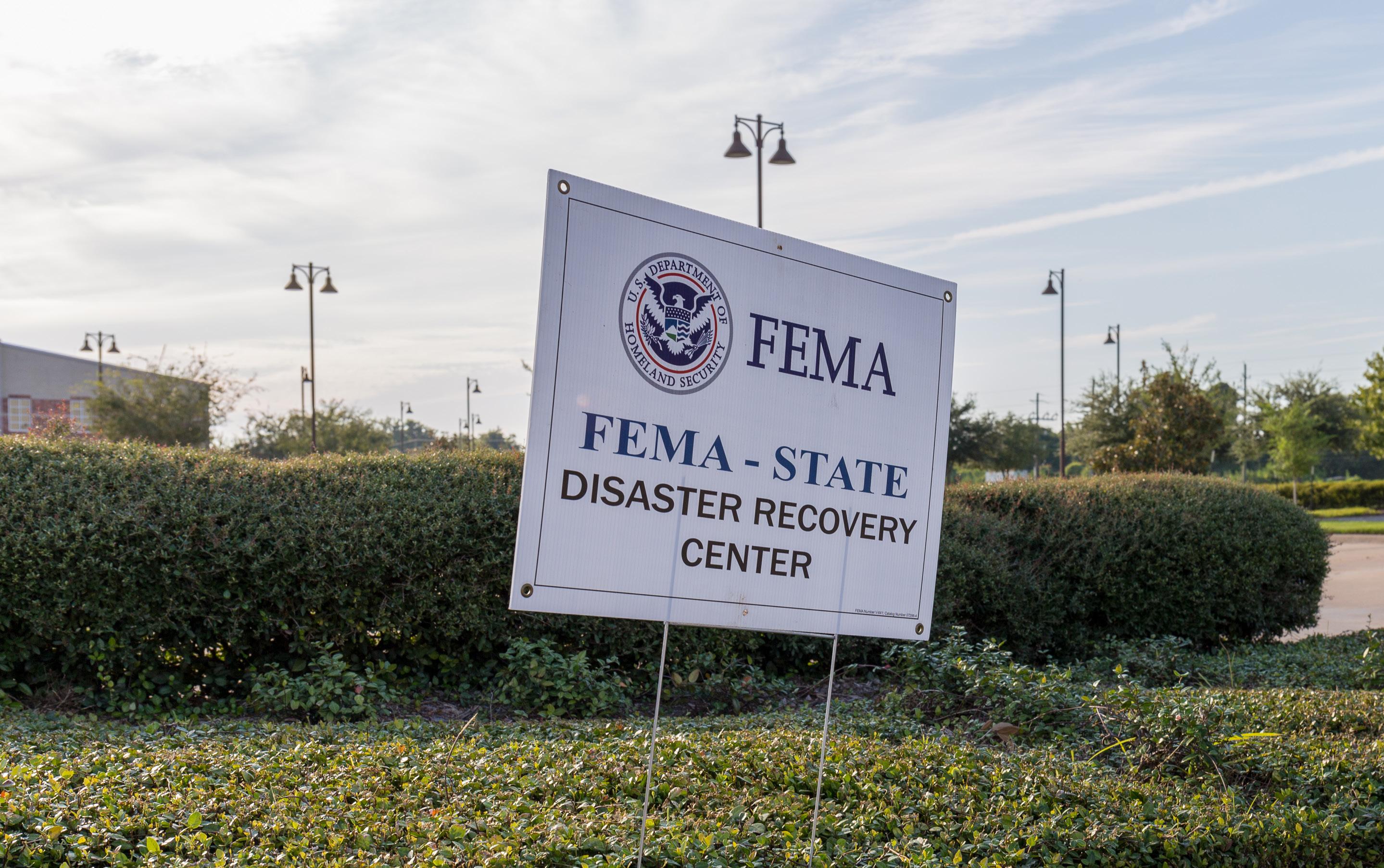
7 minute read
BRIC by BRIC: Federal Natural Infrastructure Funding for the Future

By Porter Graham, Shared & Regional Government Affairs Director
Issued in October 2018, Executive Order 80 promulgated the framework within which Governor Cooper plans to honor North Carolina’s responsibilities as a signatory to the United States Climate Alliance, a coalition of twenty-four states committed to the 2015 Paris Agreement regardless of federal climate policy. Executive Order 80’s ambitious emissions and energy consumption reduction targets dominated associated reporting, which underemphasized Governor Cooper’s other notable foci on resilience and adaptation planning. Among Executive Order 80’s underreported elements was a directive that the Department of Environmental Quality (DEQ) issue North Carolina’s first comprehensive climate adaptation plan. Released in June 2020, DEQ’s Climate Risk Assessment and Resilience Plan (hereinafter “the Plan”) prioritizes enhancement of natural infrastructure as an “immediate focus” for state and local government. “Natural infrastructure” merited the Plan’s reference thirteen times, including in Governor Cooper’s brief introduction, all with one specified purpose: flood prevention. The centrality of flood prevention to climate adaptation planning in coastal communities, and evidently of natural infrastructure to the state’s resilience solution toolkit, begs practical questions about the suitability of existing funding authorities to natural infrastructure flood mitigation projects. In an environment of grave budgetary challenges for state and local governments and historical disparities in pre- and post-disaster federal funding, what federal legislative and programmatic support enables interpretation of North Carolina’s new natural infrastructure emphasis as a serious, actionable proposal for confronting climate challenges?

Within the flood prevention context, natural infrastructure refers to engineered shoreline stabilization and flood-mitigation systems that replicate or enhance natural ecosystems’ and morphological features’ potential as physical wave barriers or drainage mechanisms. Natural infrastructure has been promoted by DEQ’s Division of Coastal Management (DCM) as a favorable alternative to conventional “gray infrastructure”, which includes concrete levees, seawalls, and other hard armored structures. Sparsely defined in the Plan as “e.g. oyster, reefs, marsh, living shorelines”, natural infrastructure is often presented in DCM literature as more permanent, economical, and effective than conventional armoring, which involves higher maintenance costs, fails to potentiate cobenefits like aquatic habitat restoration, and often poses erosion hazards to adjacent shoreline. Though North Carolina’s interest in natural infrastructure accords with national and global perspectives on preferred climate-resilient engineering solutions, National Oceanic and Atmospheric Administration (NOAA) and Federal Emergency Management Agency (FEMA) guidance documents and other seminal literature mostly advertises case studies and similarly anecdotal illustrations of natural infrastructure’s potential. This is because the relative rarity of significant investment in natural infrastructure projects limits available synthetic information justifying said investment; a policy catch-22 that often functions to disincentivize innovations in institutional capacities (particularly fiscal capacities) to advance novel solutions.
Recent academic and governmental investigations profiling barriers to natural infrastructure projects have unsurprisingly identified real or perceived insufficiencies in funding and other resources as the primary impediment to progress. Broad disproportions in pre- and post-disaster federal resources, anachronistic tailoring of federal funding authorities and associated programming to traditional hard armoring, and the discontinuous and highly competitive nature of federal adaptation funding generally, have contributed to a sense of isolation among state agency and local planning staff that undermines exploration of projects lacking adequate state and local financing. This has restricted recent progress in natural infrastructure engineering largely to small, discrete, exploratory projects with short life-cycles involving limited interjurisdictional collaboration. Among the intended vehicles for practical, collaborative, stakeholder-inclusive adaptation planning are the twenty-eight National Estuary Programs established by amendments to the Clean Water Act in 1987. In response to Executive Order 80 and the Plan, North Carolina and Virginia’s AlbemarlePamlico National Estuary Partnership (APNEP) began prioritizing living shorelines to address erosion in the Albemarle and Pamlico sounds. Comments from APNEP leadership preparatory to APNEP’s 2020 Leadership Council Strategic Planning Meeting characterize implementation progress as “a patchwork” of “very localized, restoration-oriented projects”; “essentially a shotgun approach with efforts scattered all over the place”, and “funding meaningful projects” as “a weakness given limited funds” from a variety of siloed state agencies. APNEP’s concerns generalize widely across regional and state entities responsible for coastal adaptation, indicating a need for federal articulation of clear technical standards for planning and implementation and improved guidance as to whether and how state and local natural infrastructure projects can achieve federal mitigation goals and thereby necessary funding. Writ large are broader questions about the status, sufficiency, and prioritization of federal plans for enhanced mitigation funding posed by the historic scale of the U.S. Government’s responses to the Katrina and Sandy disasters.
Following these storms, a spirit of national urgency catalyzed political will in Congress for massive federal risk-reduction outlays totaling $2.7 billion in six affected states, dwarfing the $90 million available via FEMA’s Hazard Mitigation Grant Program for the entire United States in 2012. Demands for greater equitability in federal attention to disaster preparedness and a reduction in FEMA’s complexity were underscored by the hyperactive 2017 Atlantic hurricane and California seasons; hence the National Institute of Building Sciences Multihazard Mitigation Council and similar authorities’ sedulous promotion of revised mitigation expenditure-tosavings ratios, and the 2015 OpenFEMA initiative to publically release internal data on mitigation effectiveness. These efforts culminated in the Disaster Recover Reform Act of 2018 (DRRA), the most comprehensive amendment in decades to the Stafford Disaster Relief and Emergency Assistance Act of 1988, which initially authorized executive provision of predisaster assistance to state governments and organized relevant activities under FEMA. DRRA aimed to substantially reallocate federal disaster funding from restoration and replacement to mitigation, principally via an important new funding authority.

DRRA Section 1234 created the National Public Infrastructure PreDisaster Mitigation (NPIPDM) Fund, into which FEMA may set aside 6% of aggregate annual grants from the Disaster Relief Fund (DRF), the federal government’s primary domestic disaster recovery fund, which as the principal repository of the 116th Congress’s historically large disaster relief appropriations carried a 2019 balance of more than $29 billion. As of October 2020, NIPPDM funding available via the 6% set-aside totaled $956 million, and FEMA anticipates additional annual NPIPDM fund allocations averaging $300 to $500 million, depending on the scale of future disaster events in any given year. The PEW Charitable Trusts estimates that the 6% NPIPDM set aside would have generated at least $650 million for federal resilience investment in 2017 alone had DRRA existed at the time. Prior to DRRA, pre-disaster mitigation funding was determined by discretionary legislative appropriations to the Predisaster Mitigation (PDM) Fund subject to political and other extraneous priorities and thus both highly variable and broadly incommensurate with local needs. NPIPDM provides for federal prioritization of pre-disaster investment with a consistent, significant increase in FEMA’s capacity to incentivize large and complex resilient infrastructure projects. DRRA conditions NIPPDM funding eligibility on the applicant’s receipt of a major disaster declaration at least seven years prior to the funding period start date, an intentionally broad criterion that every state and territory can satisfy. In April 2020 FEMA introduced the Building Resilient Infrastructure and Communities (BRIC) Policy, the framework within which NIPPDM funding will be administered, to supersede the PDM fund and “promote a national culture of preparedness through encouraging investments to protect communities and infrastructure and strengthening national mitigation capabilities to foster resilience.”
Intended to transform federal mitigation investment, BRIC will competitively allocate NIPPDM funding to 75% federal cost-sharing for “capability- and capacity-building”, which involves project-scoping and environmental permitting; mitigation project implementation, which involves engineering and construction costs; and management costs, which include pre-award administrative costs incurred at any time in the development of an application. In competitively allocating BRIC funding FEMA will apply a benefit-cost analysis (BCA) predetermined by rulemaking to assess the long-term value of proposed projects’ risk reductions as required by the Office of Management and Budget. Comments in response to FEMA’s publication of its proposed BRIC policy expressed significant concern that the BCA methodology might complicate FEMA’s prioritization of natural infrastructure solutions by limiting their competitiveness relative to conventional grey infrastructure projects. Among the stakeholder concerns most cited in FEMA’s proposed BRIC policy comment summary involved the BCA’s failure to contemplate the range of ecosystem service benefits associated with natural infrastructure, including improvements to air quality, pollutant filtration, habitat restoration, and recreation space. FEMA responded to these comments by finalizing in June 2020 alterations to the BCA eliminating a benefit-cost ratio threshold designed for conventional grey infrastructure that infrastructure projects were previously required to meet before inclusion of ecosystem service benefits in cost-effectiveness calculations. This exemption for BRIC-funded projects from legacy BCA requirements is intended to enhance green infrastructure’s competitiveness for FEMA awards and thus the diversity of federally-funded resilience projects. Because BRIC’s first funding application period opened September 30, 2020, the exemption’s potential to achieve parity for green infrastructure funding is as yet untested. It is, however, a positive indication of FEMA’s receptivity to programmatic reforms serving adaptation innovation.
While rigorous Congressional oversight of BRIC implementation should continue, the program demonstrates a meaningful proactive shift in federal disaster mitigation policy. As additional refinements in the BCA methodology and similar procedural and policy details evolve, the North Carolina Association of REALTORS® will monitor corollary adjustments to state programming and guidance for local governments in keeping with our commitment to ensure thriving coastal communities. Please anticipate additional information on BRIC funding utilization and the Climate Risk Assessment and Resilience Plan in subsequent Insight issues.









